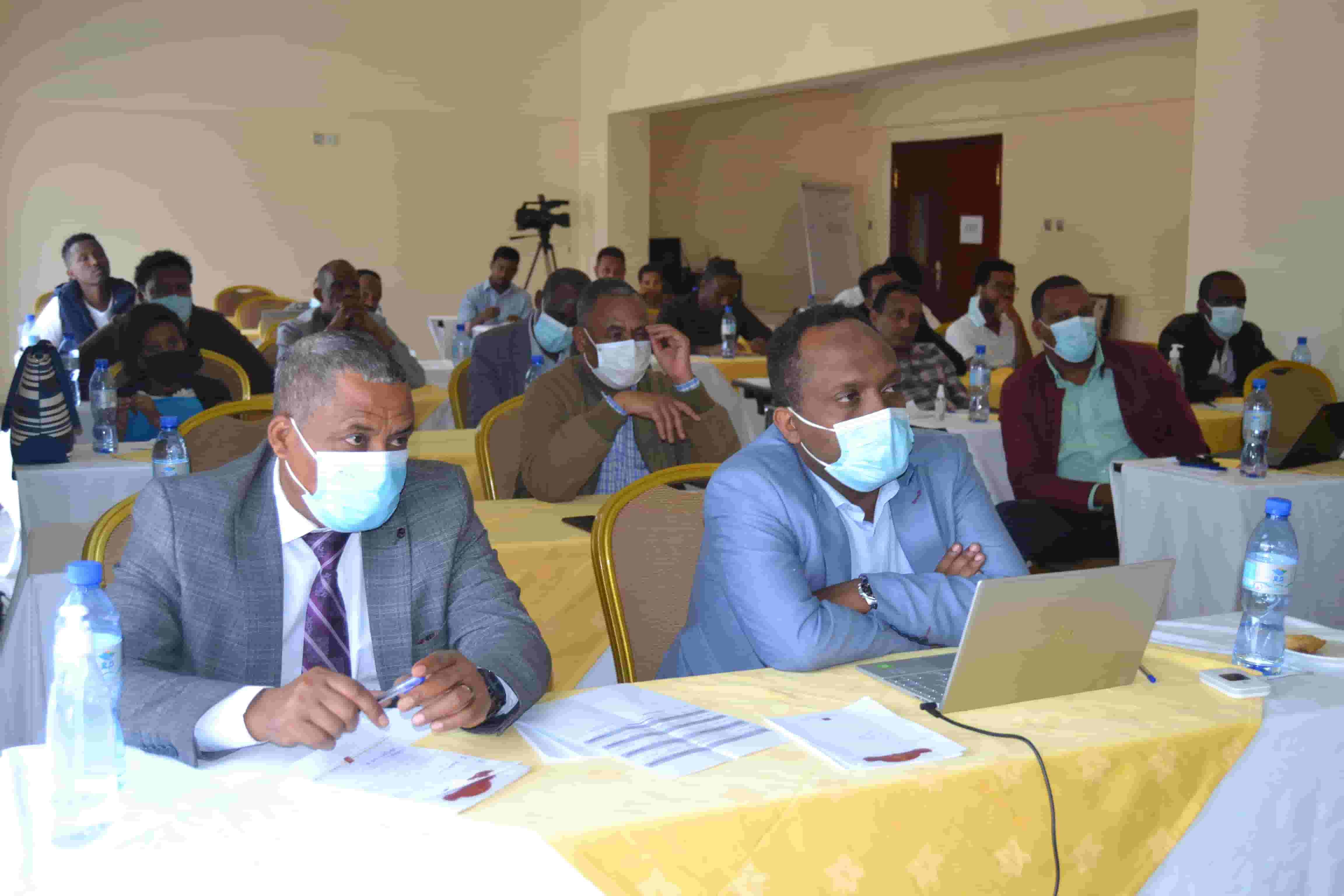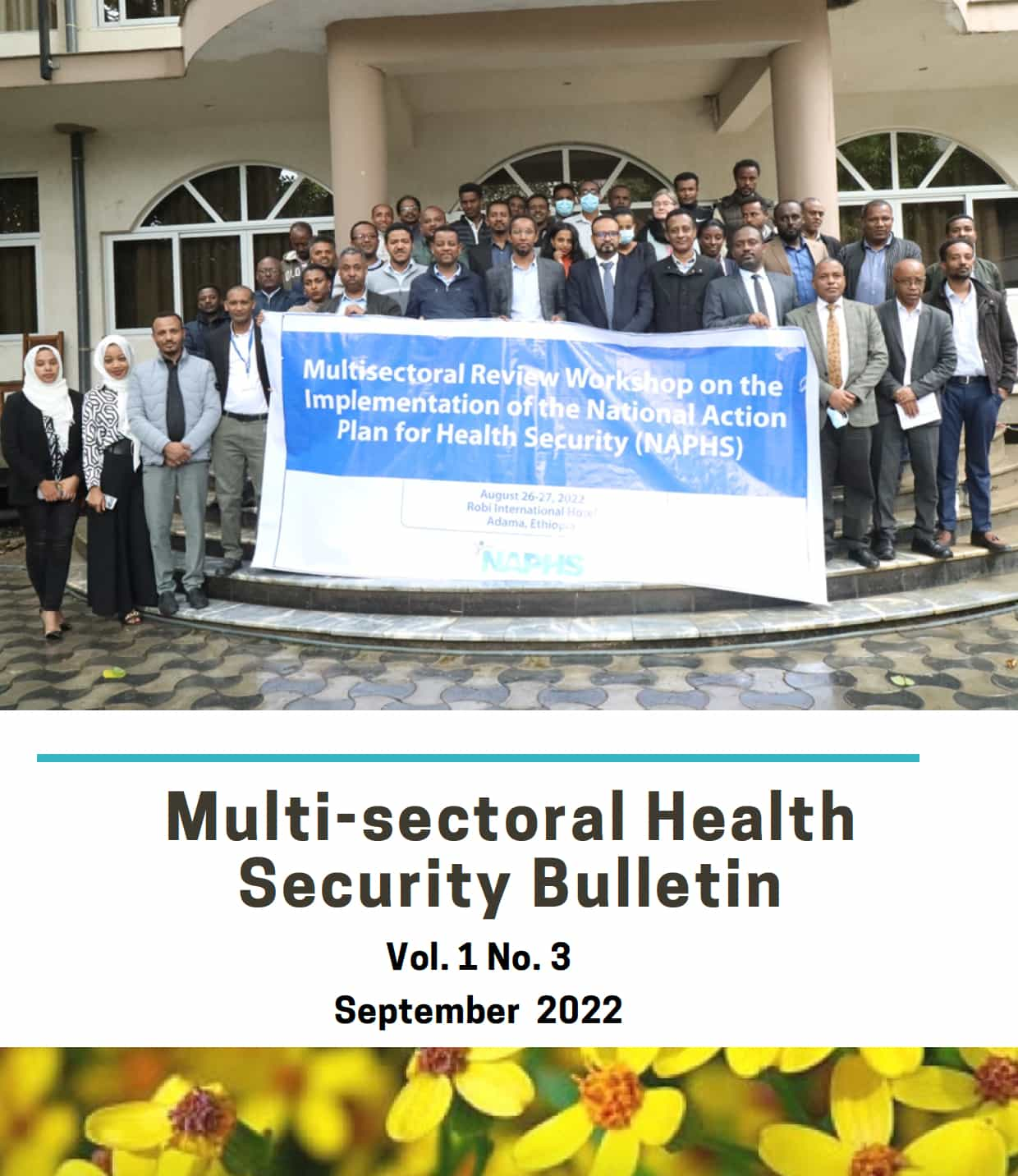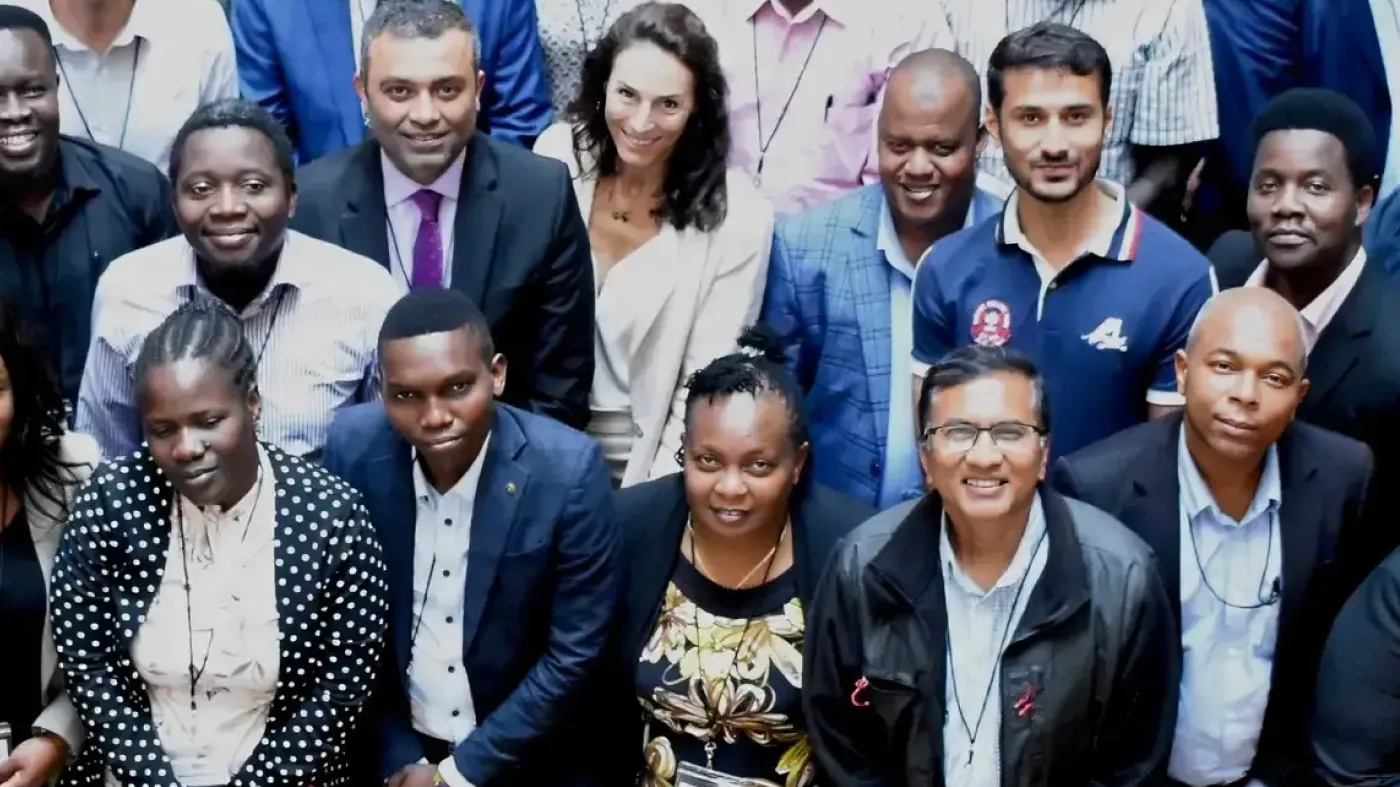Download All Country Data
Epidemic preparedness is a low priority in most countries, lacking dedicated resources. It’s subject to a cycle of panic and neglect—flooded with investment in times of crisis, then pushed aside amid other priorities. Preparedness must also be coordinated across multiple sectors, which can be challenging; mechanisms for collaboration and information-sharing must be established and maintained. Officials often have few opportunities to share lessons learned across different sectors and countries. In Ethiopia, health security assessments found that a breakdown in communication was hindering progress.
A solution for improving communication
Strengthening Ethiopia’s coordination of preparedness activities was a key piece of the country’s National Action Plan for Health Security (NAPHS), which has functioned as a blueprint for epidemic preparedness activities in the country since 2019. To improve information-sharing between different departments involved in NAPHS implementation and increase the visibility of preparedness activities, the Ethiopian Public Health Institute (EPHI) developed a quarterly bulletin covering national health security news. Example topics include the intersection of human, animal and environmental health in the One Health approach, workshop summaries and write-ups about immunization campaigns.
EPHI enlisted the support of a communications professional, Asfaw Degefu, to act as the bulletin’s editor-in chief. To gain a comprehensive view of his new journalistic “beat,” Degefu engaged public health bodies involved in the wide-ranging work of preparedness, such as the Ministry of Health, the Ethiopian Wildlife Conservation Authority (EWCA) and EPHI’s own public relations department. Willing contributors were then set to work drafting articles, and editorial meetings were held to support coordination and editing as needed.

An editorial meeting for Ethiopia’s Multisectoral Health Security Bulletin
The Multisectoral Health Security Bulletin
The first issue of the Multisectoral Health Security Bulletin was published in March 2022 and covered key news and events from June to December 2021, including a review of the 546 total activities in Ethiopia’s NAPHS and a success story about Ethiopia’s efforts to maintain measles vaccination efforts during the pandemic.
In an opening message, EPHI’s Deputy Director-General, Aschalew Abayneh, wrote: “The current COVID-19 pandemic response has underscored the importance of cooperation and solidarity in creating a healthy and secure world. To this end, it is vital to maintain that all NAPHS stakeholders collaborate more effectively. As a result, the purpose of this quarterly bulletin is to provide a periodic progress update on the status of implementation of key activities; identify capacity gaps and resources needed to strengthen the efforts to build better health security.”
The bulletin has since been published quarterly, with the third edition arriving in September 2022. Celebrating the publication of the bulletin’s first edition, EPHI’s Head of Public Relations and Communication, Ato Gezahene Tesfaye, said: “The Multisectoral Health Security Bulletin is an important step forward in strengthening Ethiopia’s ability to prevent epidemics. Communication and coordination across different ministries, departments and agencies are crucial to ensuring that any plans to reinforce health security will actually be put to action. Besides this, the bulletin sets the path for all sectors to collaborate in a harmonious manner; it will also help to make NAPHS activities more real, effective, and fruitful.”
As publication of the bulletin continues, an ongoing objective will be improving accountability for progress on NAPHS activities by increasing visibility and transparency across sectors. The team also plans to develop a two-page brief summarizing key points on NAPHS progress for different sectors’ senior leadership, who might not otherwise have time to read the full bulletin.
How Ethiopia’s dedicated preparedness team made the bulletin possible
Epidemic preparedness rarely has dedicated personnel. But this is not the case in Ethiopia, where a multidisciplinary team of public health professionals has been embedded within various parts of EPHI to accelerate the development, prioritization and implementation of NAPHS activities since 2018. Preparedness teams like this one combine technical and “soft” skills such as program management and leadership to accomplish their mandate. Degefu, the bulletin’s editor-in-chief, is a member of Ethiopia’s dedicated preparedness team.
Although the team is funded by Resolve to Save Lives (RTSL), it is fully integrated in and accepted by Ethiopia’s public health bodies. Having teams dedicated to preparedness allows tools such as the bulletin to be developed and helps ensure that strengthening preparedness does not fall through the cracks.
RTSL has also embedded preparedness teams in Uganda, DRC and Nigeria.
“Dedicated preparedness teams keep the work top-of-mind for public health officials who are juggling competing priorities” said Amanda McClelland, Senior Vice President of Prevent Epidemics at RTSL. “The model shows what is possible when just a handful of staff are dedicated to epidemic prevention.”

The cover page of the bulletin’s third edition






